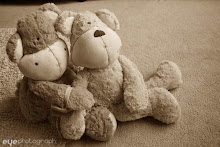 Click to enlarge
Click to enlarge I know many amateurs that have DSLR cameras but don't know how to use it to its potential. I'm not saying that I know everything, but I did learn few things about it after reading the camera's manual in addition to many, MANY photography articles as well. It was alot of reading to do and most of them were very detailed. I do like details but as an amateur who doesn't study photography, it was too much to understand *information overload*. Therefore, I figured that my dear fellow amateurs would want to learn too but in a less complicated way, so here I'll try to explain them in the most simple way possible, so bear with me. =)
I'll start with ISO (which is a function that exists in DSLR cameras), so what is it? It is the sensetivety of the camera's image sensor to light. the number of the ISO varies between 100, 200, 600, 800, and 1600 (depends on the camera). The higher the ISO number, the more sensetive the sensor becomes to light in the surrounding environment and vice versa.
You can set the ISO depending on the degree of lighting available or exposed to your subject. set a low ISO when the environment is well lit (i.e.100-200). Set it to a higher number (i.e. 400-600) when the environment is dim. Finally, if it was dark set the ISO to its highest, then the sensor will be very sensetive to the smallest ray of light available. However, one side-effect of too ligh ISO is that it will make the photo looks grainy, therefore try to keep it relatively low.
THERE! =D ... that's mainly it...
However, ISO affects shutter speed as well.
To keep it simple, the higher the ISO, the faster the shutter speed becomes and vice versa.
Here's an illustration
:
ISO 1600















2 comments:
When I first picked up my DSLR, being the excited person I was I didn't bother with reading manuals. I guess I was just way in over myself and thought:
"OHH psshtt .. I can do this, It's just a camera!"
But ohhh I was sooo wrong! I started reading up about my Camera and DSLR cameras in general and the rest was history.
I learn more from practical experience though
I know I was the same too =)
When I got my camera I started taking pictures right away, then I realized that I need to understand it better when the photos I took didn't turn out the way I wanted them to be.
And ofcourse practice is important =)
Post a Comment